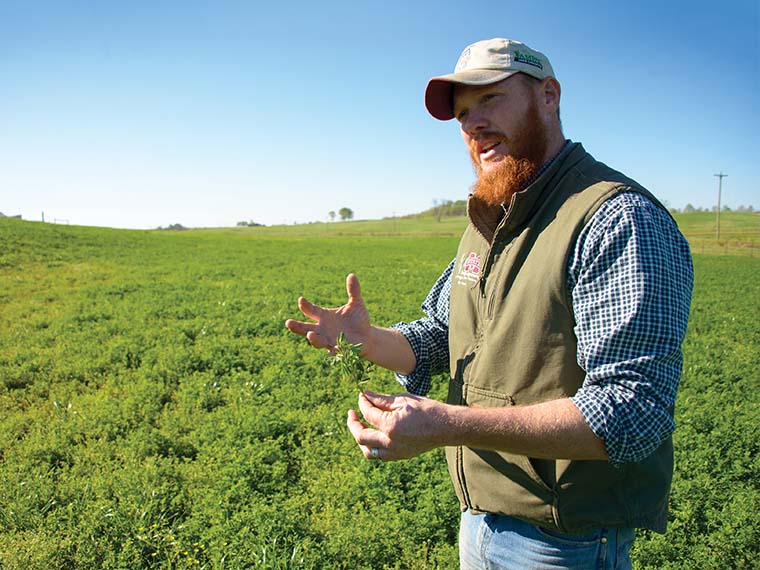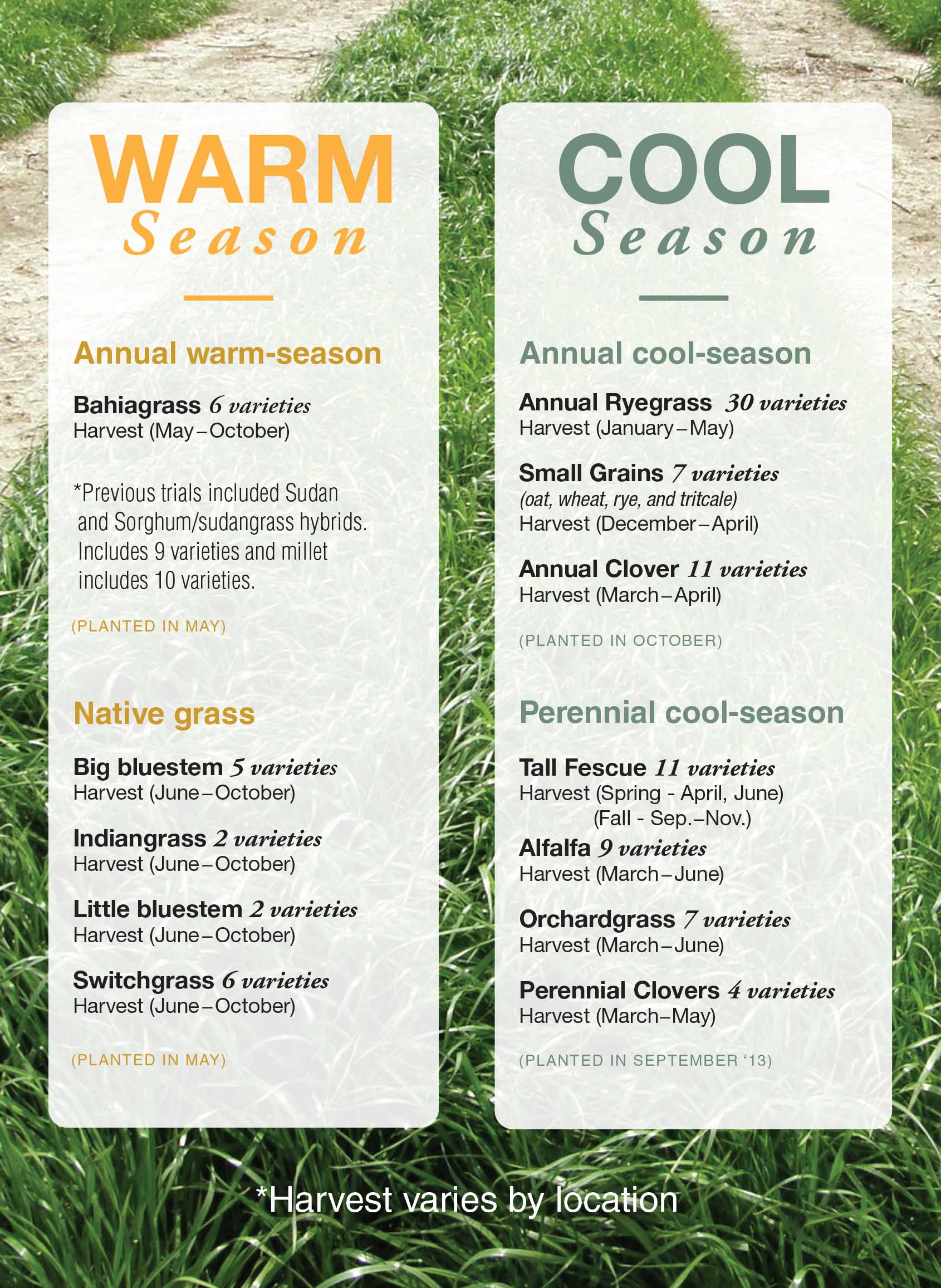The information presented on this page may be dated. It may refer to situations which have changed or people who are no longer affiliated with the university. It is archived as part of Mississippi State University's history.
The Mississippi Agricultural and Forestry Experiment Station is home to the most comprehensive forage testing program in the U.S.
Josh White, manager of the MAFES Official Forage Variety Trial program, has been managing the program for five years. When White started, annual ryegrass was the only forage tested. Now there are over 100 different varieties, 20 different species, and four different groups.
The four testing locations-Holly Springs, Starkville, Newton, and Poplarville-each have different soil types and environments. By testing in different locations, researchers can determine which varieties perform the best in the state and by geographic area.
"We provide an unbiased assessment of the performance of forages and give producers an information source," White said. "Variety selection is one of the most important decisions made annually by Mississippi forage/livestock producers. Timely, objective, scientifically-based, and regionally relevant information on expected yield performance is crucial for making planting decisions."
The year-round Official Variety Trials program includes cool-season forages, warm-season forages, perennial cool-season forages, and native grasses.
Cool-season forages include small grains (oat, wheat, rye, and triticale), annual ryegrass, and annual clover varieties.
"Annual ryegrass is the most important and versatile cool-season annual grass for livestock producers in Mississippi," White said. "In pasture and hay systems, annual ryegrass is a popular forage because of its ease of establishment, high nutritious value, high yields, good reseeding ability, and adaptability to a wide range of soil types. Annual ryegrass can be established in pure stands or mixed with small grains and/or clovers for cool-season forage production."
Annual clovers may reduce nitrogen input and improve forage quality in pastures. For this reason, they can be beneficial in Mississippi when interseeded into annual, cool-season grass pastures, White added.
Warm-season forage crop variety trials include perennial and annual forage crops of bahiagrass, sorghum, sorghum/sudangrass, and millet. Bahiagrass is given a year to get established before being harvested in 30 to 35 day intervals. Sorghum is generally grown for silage and may be harvested twice depending on growing conditions. Sorghum/sudangrass hybrids and sudangrass can be used for pasture, hay, or silage production. Millet are productive in pasture and silage systems and generally allow for multiple cuts.
Perennial cool-season forage crop variety trials include tall fescue, orchardgrass, perennial clovers, and alfalfa. Tall fescue entries include endophyte-infected, endophyte-free, and novel-endophyte types. Novel-endophyte types contain an endophyte fungus which is not toxic to cattle. Perennial clovers have excellent forage quality but white clover tends to have a greater potential to cause bloat. Native grass variety trials include big bluestem, little bluestem, switchgrass, and indiangrass. These grasses may take one to two years to become established, however, once established, they have longevity and do not require a lot of fertilization."
Experiment Station scientists at the Coastal Plain Branch Experiment Station are currently working on best management practices for the establishment of native grasses for foraging in Mississippi.
White recommends looking at three years of planting data to determine which variety might work best in your location.
"Environmental conditions change each year," White said. "Try to look at varieties that have been in trials for three years to get a better sense of which one performs the best."
Find more information about the forage variety trials at mafes.msstate.edu/variety-trials/forage.asp.


